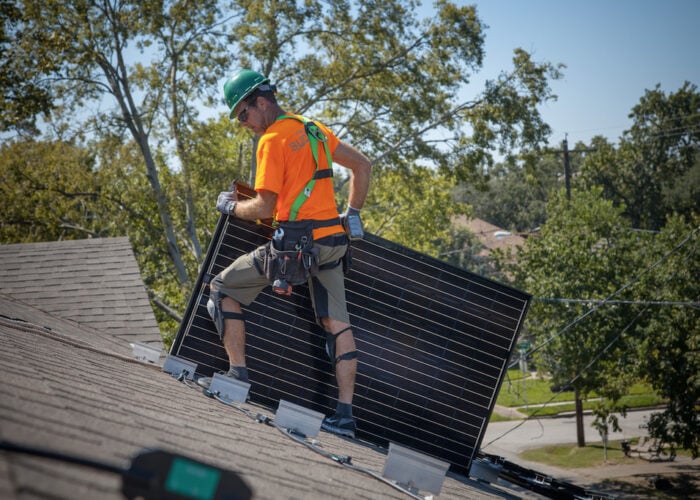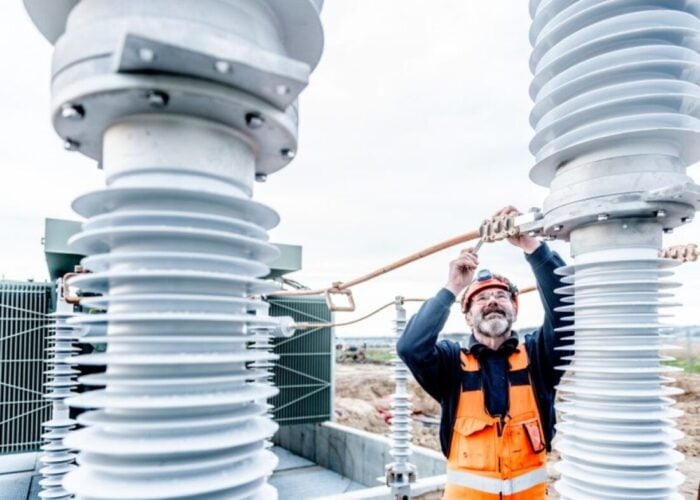UPDATE 2. Friday's 8.9-magnitude earthquake off the north-east coast of Japan was said by experts to be the largest to hit the country in over a century. A massive tsunami 10-metre (33-foot) high battered coastal towns and cities across the northeast coast with Sendai, north of Tokyo affected the most by the disaster. On Saturday, March 12, news of a hydrogen explosion at a nuclear power station on the coast in Fukushima and the potential for further deterioration dominated news channels around the globe.
As for the events' impact on the solar PV supply chain, initial reports indicate the effects have been minimal.
Unlock unlimited access for 12 whole months of distinctive global analysis
Photovoltaics International is now included.
- Regular insight and analysis of the industry’s biggest developments
- In-depth interviews with the industry’s leading figures
- Unlimited digital access to the PV Tech Power journal catalogue
- Unlimited digital access to the Photovoltaics International journal catalogue
- Access to more than 1,000 technical papers
- Discounts on Solar Media’s portfolio of events, in-person and virtual
Like semiconductor fabs in Japan, many PV manufacturing plants would have automatically shut down equipment as a consequence of the initial earthquake. Damage assessments would be made before production would resume.
However, with significant aftershocks continuing, it is yet unknown whether plants would be operating, even intermittently during this time.
Some reports related to the semiconductor industry have noted that shutdowns at Sanyo, Sharp, and Panasonic plants in certain unidentified areas of the country had indeed been implemented, although no details existed which plants had been affected.
The northeast region has been impacted the most, mainly by the tsunami that followed the quake. Power to parts of the region is down, and intermittent power is being experienced in other northern regions.
With respect to the PV industry in the country, the majority of manufacturing operations are located in the south-central prefectures around Osaka and Kyoto as well as on the southernmost island of Kyushu, and would not seemed to have experienced major disruptions.
Much of Japan’s heavy industry shut down after the quake and reported few problems.
Corning was one of the first to make a public statement concerning glass-making operations, which include its facility in Sakai City near Osaka, home to Sharp’s new LCD and thin-film PV manufacturing facility.
Corning said that there had not been any employee injuries and that its operations in Japan had not been affected by the earthquake and tsunami. Glass-making operations were running normally, according to the company.
Today, Sharp itself issued a brief statement, confirming Corning’s earlier assessment, noting that:
“There are no extensive damages to our buildings or production facilities in Japan, including our plant located in Yaita-city, Tochigi Prefecture. Our LCD panel production facilities located in Sakai-city, Kameyama-city, Taki-cho, and Tenri-city are continuing normal operation.”
Sanyo on Friday was said to be assessing any potential damage but at the time of writing had not posted any statement on its website. (Note: See update 1 for more on Sanyo).
Checks made since the earthquake indicate that few PV manufacturers have made official statements concerning operations in Japan.
According to IHS iSuppli, few if any semiconductor manufacturers had been seriously affected by the quake. In a news flash to the media, the market research firm noted:
“The major impact on Japan’s semiconductor production is not likely to be direct damage to production facilities, but disruption to the supply chain. Suppliers are likely to encounter difficulties in getting raw materials supplied and distributed and shipping products out. This is likely to cause some disruption in semiconductor supplies from Japan during the next two weeks.”
This could also apply to the PV industry, especially in relation to materials required for production and to the export of modules.
Further updates will follow as further information becomes available. If readers have news of developments, please post these as comments to this story.
UPDATE 1
The Wall Street Journal is reporting that AU Optronics has shut down its solar-wafer unit's production plant, M.Setek, in Sendai. “All our staff are safe,” an official with the company is quoted as saying. “But at this moment, we have no idea if there are any losses and when we will resume production, until we are able to get there and assess the situation.”
AUO also issued a statement, which said that it has established a Crisis Cabinet in its headquarters in Hsinchu, Taiwan, as well as in Tokyo.
Regarding the status of the M.Setek polysilicon plant in Soma, Fukushima Prefecture, the company statement said the following: “According to latest understanding for the time being, all employees and facilities remain safe and no major damage incurred by the earthquake and tsunami is reported. As to when the facilities resume operations will depend on the recovery status of the local infrastructure.”
(Additional reporting and editing by Tom Cheyney)







